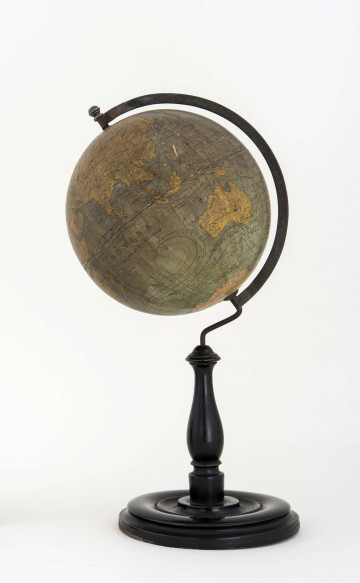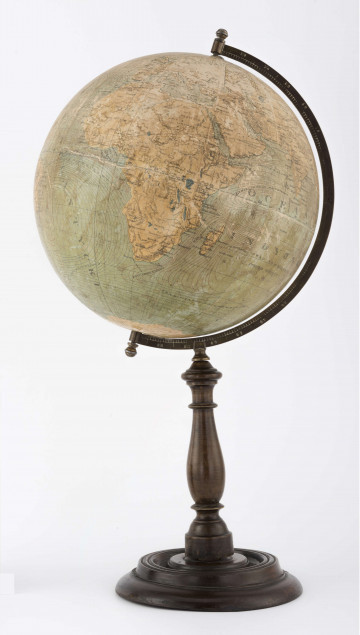
Physical globe of the Earth
1924 — 1931
National Museum in Lublin
Part of the collection: Globes
Another example of an ‘unusual’ globe is Nowy globus dla uczni prof. Dra A. Krausego [Professor Dr A. Krause's New Globe for Students]. The combination of an educational function with a moneybox was probably intended to encourage its users both to learn about the geography of the world and to save money (for example, for future dream trips). The author of the globe map mentioned in the name, Stanislaus Friedrich Arthur Krause (1851-1920), was a German natural scientist, cartographer, geographer, ethnographer and traveller. The globe was issued by the ‘Pestalozzi’ School Supply Company from Warsaw. Taking the catalogue of its products as a basis and inferring from the content of the map (a political map), this globe appeared on the market around 1930. The archaic-sounding grammatical form of its addressees (‘for students’) draws attention. At that time, it was the smallest globe offered – it had a diameter of 12 cm and a map in the scale 1:106 million. It was not equipped with a meridian or a base. The stability of the globe was ensured only by its flattening in the area of Antarctica. A slit in the moneybox passed through the North Pole. To access its contents, it was enough to separate the northern and southern hemispheres on the line of the equator. The cardboard sphere was covered with twelve segments of the map from two different editions. This is because on the territory of the European part of the USSR one can notice inconsistencies in the course of rivers and in the distribution of cities. The name of the city of St. Petersburg, on the other hand, consists of fragments of two names: Lening and rsburg, thanks to which the globe owned by the museum belongs to unique copies (no others with a similar defect are known). The globe was donated to the museum in 1982 by Helena Uhorczak, wife of Professor Franciszek Uhorczak (1902-1981) – a cartographer and geographer, before the war a student and assistant of Professor Eugeniusz Romer in Lvov, and after the war for many years associated with the Institute of Earth Sciences of the Maria Curie-Skłodowska University in Lublin.
Author / creator
Dimensions
cały obiekt: width: 12 cm
Object type
globe
Technique
gluing
Material
cardboard, paper
Creation time / dating
Creation / finding place
Owner
The National Museum in Lublin
Identification number
Location / status

1924 — 1931
National Museum in Lublin

1920
National Museum in Lublin

1920 — 1927
National Museum in Lublin
DISCOVER this TOPIC
National Museum in Lublin
DISCOVER this PATH
Educational path